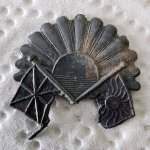JohnnyThunders
Jr. Member
- May 10, 2005
- 73
- 2
Well i was thinking of getting the Garrett 2500 Pro at $879 but I would like to take the machine when i go away on vacation to Calif and seach for gold in the northern parts of calif.So I am looking for a detector thats good on the beach and looking for coins on the east coast but want it if i want to look for nuggets...
Woman on the phone from KellyCo.com told me that i am better off getting the Whites DFX because its a dual coil and it also has a program in it to seach for Gold where the garrett does not and it also goes a bit deeper as the people from Kellyco says....
So maybe now i am leaning with the whites unless some of yea good folks tell me different...
Thought the whites would be bad taking it to a beach and getting sand in it and mosture because its made out of metal as where the garrett is plastic...JohnnyT
Woman on the phone from KellyCo.com told me that i am better off getting the Whites DFX because its a dual coil and it also has a program in it to seach for Gold where the garrett does not and it also goes a bit deeper as the people from Kellyco says....
So maybe now i am leaning with the whites unless some of yea good folks tell me different...
Thought the whites would be bad taking it to a beach and getting sand in it and mosture because its made out of metal as where the garrett is plastic...JohnnyT
Upvote
0







